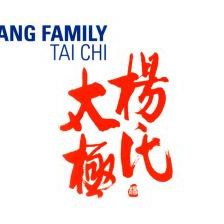What is Tai Chi?
The Teachings of Yin & Yang in Martial Arts
Strength in tai chi follows the ability to yield and be soft.
Be like water, my friend.
A Tradition of Chinese Medicine and Wisdom
Tai chi has become known primarily for promoting physical and mental agility and adaptability with its soft, often meditative movements and gentle stretches. Even people with weak or sickly bodies can learn and grow in tai chi without hurting themselves. Unlike modern martial arts, there is no physical deterioration in tai chi. Based on traditional medicine and the wisdom of Neo-Confucian philosophy, the Chinese have created tai chi as a martial art that combines aesthetics and strength in the pursuit of eternal youth over a long life.
From the Wudang Mountains

Chinese martial arts (also often called 功夫 kung fu or 武术 wushu) are classified in different ways. Wudang (武当 wǔdāng) martial arts establish a tradition also known as internal martial arts (内家拳 nèijīaquán). They are the counterpart to external martial arts (外家拳 wàijīaquán) attributed to the shaolin (少林 shàolín) tradition.
How Is Tai Chi Practiced?
The Curriculum
The Yang Family Tai Chi curriculum for beginners progresses along certain milestones. The first milestone is learning a hand form. A form2 is a rehearsed sequence of movements in a martial art, also known as shadow boxing. The forms provide the framework for independent and routine practice. Once students have internalized the traditional hand form (a long, weaponless form) and its principles far enough, partner exercises3 become increasingly relevant, and weapon forms - sword & saber - start getting introduced. The transition into partnered and weapon exercises reflects that pure form practice is only the vessel for the more formless elements of the training, which focus on the energies of the movements and the mental attitude while practicing.
The System
The system of tai chi builds on the concept of yin and yang. One practices in a group, but one also practices alone. You do exercises without a counterpart but also learn applications with partners. You know forms, but you also learn to move outside these forms. Stillness and movement complete each other. Hardness and softness are complementary.
Chin.: 套路 tàolù; Jap.: 形 kata
These include push hands (推手 tuīshǒu) and applications (拆招 chāizhāo) at first and free fighting (散手 sānshǒu) much later.
Tai chi is the art of letting hardness dwell within softness and hiding a needle within cotton.
Yang Chengfu
Family Tradition: Yang Family Tai Chi
Yang Family Tai Chi4, as a family tradition, finds its roots back in the first half of the 19th century. At that time, Yang Luchan learned tai chi from the Chen family. With him and his two sons, Yang Banhou and Yang Jianhou, as the tradition's founders, generation after generation of Yang family descendants continued to be taught. The differentiation of tai chi styles by family name is due in no small part to the fact that it was not until the 20th century that tai chi began to be taught on a larger scale outside of its own families. The third generation lineage holder of the Yang family, Yang Chengfu (1883-1936), was one of the first to make tai chi widely popular in China. His third son, Yang Zhenduo (1926-2020), continued this movement in the age of globalization, traveling outside of China as a tai chi teacher and teaching the art to the world along with his grandson Yang Jun. Tai chi has continually evolved and changed in an organic way. The continuation of a family tradition means that lineage holders always strive to imbue and teach the complete system of their ancestors. For the association, our close connection to the original Yang Family also ensures fewer generations between the great masters that invented and shaped this art and us.
杨氏太极拳 yángshì tàijíquán
Further Definitions: UNESCO


